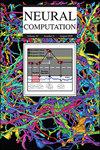Active Inference and Intentional Behavior
IF 2.1
4区 计算机科学
Q3 COMPUTER SCIENCE, ARTIFICIAL INTELLIGENCE
引用次数: 0
Abstract
Recent advances in theoretical biology suggest that key definitions of basal cognition and sentient behavior may arise as emergent properties of in vitro cell cultures and neuronal networks. Such neuronal networks reorganize activity to demonstrate structured behaviors when embodied in structured information landscapes. In this article, we characterize this kind of self-organization through the lens of the free energy principle, that is, as self-evidencing. We do this by first discussing the definitions of reactive and sentient behavior in the setting of active inference, which describes the behavior of agents that model the consequences of their actions. We then introduce a formal account of intentional behavior that describes agents as driven by a preferred end point or goal in latent state-spaces. We then investigate these forms of (reactive, sentient, and intentional) behavior using simulations. First, we simulate the in vitro experiments, in which neuronal cultures modulated activity to improve gameplay in a simplified version of Pong by implementing nested, free energy minimizing processes. The simulations are then used to deconstruct the ensuing predictive behavior, leading to the distinction between merely reactive, sentient, and intentional behavior with the latter formalized in terms of inductive inference. This distinction is further studied using simple machine learning benchmarks (navigation in a grid world and the Tower of Hanoi problem) that show how quickly and efficiently adaptive behavior emerges under an inductive form of active inference.主动推理和有意行为。
理论生物学的最新进展表明,基础认知和感知行为的关键定义可能随着体外细胞培养和神经网络的涌现特性而出现。这样的神经网络在结构化的信息环境中重新组织活动,以展示结构化的行为。在本文中,我们通过自由能原理来描述这种自组织,即自明性。为此,我们首先讨论了主动推理中反应性和感知性行为的定义,主动推理描述了对其行为后果进行建模的智能体的行为。然后,我们引入了一种有意行为的正式描述,将智能体描述为由潜在状态空间中的首选终点或目标驱动的。然后,我们使用模拟来研究这些形式(反应性、感知性和有意性)的行为。首先,我们模拟了体外实验,在实验中,神经元培养通过实现嵌套的自由能量最小化过程来调节活动,以改善简化版《Pong》的游戏玩法。然后,模拟被用来解构随后的预测行为,导致仅仅反应性、感知性和有意性行为之间的区别,后者以归纳推理的方式形式化。使用简单的机器学习基准(网格世界中的导航和河内塔问题)进一步研究了这种区别,这些基准显示了在主动推理的归纳形式下,自适应行为是如何快速有效地出现的。
本文章由计算机程序翻译,如有差异,请以英文原文为准。
求助全文
约1分钟内获得全文
求助全文
来源期刊

Neural Computation
工程技术-计算机:人工智能
CiteScore
6.30
自引率
3.40%
发文量
83
审稿时长
3.0 months
期刊介绍:
Neural Computation is uniquely positioned at the crossroads between neuroscience and TMCS and welcomes the submission of original papers from all areas of TMCS, including: Advanced experimental design; Analysis of chemical sensor data; Connectomic reconstructions; Analysis of multielectrode and optical recordings; Genetic data for cell identity; Analysis of behavioral data; Multiscale models; Analysis of molecular mechanisms; Neuroinformatics; Analysis of brain imaging data; Neuromorphic engineering; Principles of neural coding, computation, circuit dynamics, and plasticity; Theories of brain function.
 求助内容:
求助内容: 应助结果提醒方式:
应助结果提醒方式:


